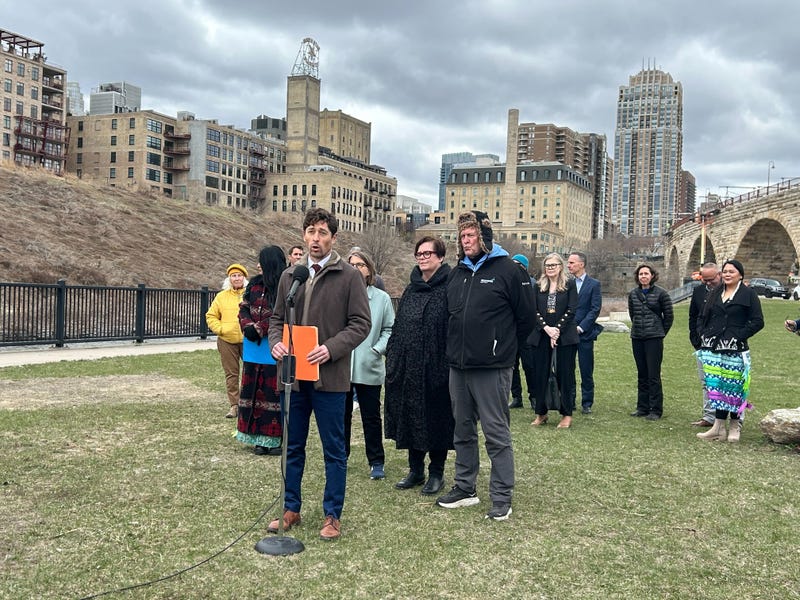
City and community leaders, including Minneapolis Mayor Jacob Frey, are announcing the upcoming transfer of land near the Upper St. Anthony Falls Lock and Dam to Owámniyomni Okhódayapi—a Dakota-led organization that will transform the five acres near the Upper Falls of St. Anthony back to Indigenous stewardship.
The land near the Upper St. Anthony Falls Lock and Dam - near the Stone Arch Bridge - will be transformed into a place of healing, restoration, and education under Native stewardship according to Dakota leader Shelley Buck.
"We're developing a design that encourages Dakota people to use the land in traditional ways, rebuilding vital spiritual connections and restoring the native plantings and habitats that are indigenous to this area," says Buck.
She adds the land was a traditional gathering place for the Dakota before the construction of the milling industry in the area in the 19th century, and that this transfer is a part of a broader movement to return land that was taken from Indigenous peoples and brings back a connection to the area’s cultural and natural history.
"Our vision is to create a place of healing, beauty, and belonging that is open to everyone," explains Buck. "I'm confident that with our partners, we will make that vision a reality."
The Upper Lock was constructed on the land in the 1950s to allow commercial barges to navigate over St. Anthony Falls. The Lock closed to commercial navigation in 2015 to halt the upriver spread of invasive carp, and the land was to be returned from the federal government back to the city as an order of Congress passed in 2020.
The U.S. Army Corps of Engineers built these three locks projects and continues to operate and maintain them today. The city and Corps of Engineers continues to study a potential a full or partial disposal, modification of the locks and dams, removal of the locks and dams, and potential opportunities for the locks and dams to serve a new purpose such as ecosystem restoration.
The transfer process began in 2015 after the Upper Lock was closed. The project is expected to be completed by 2028 featuring indigenous vegetation, restored water flow and a renewed connection to the river.
